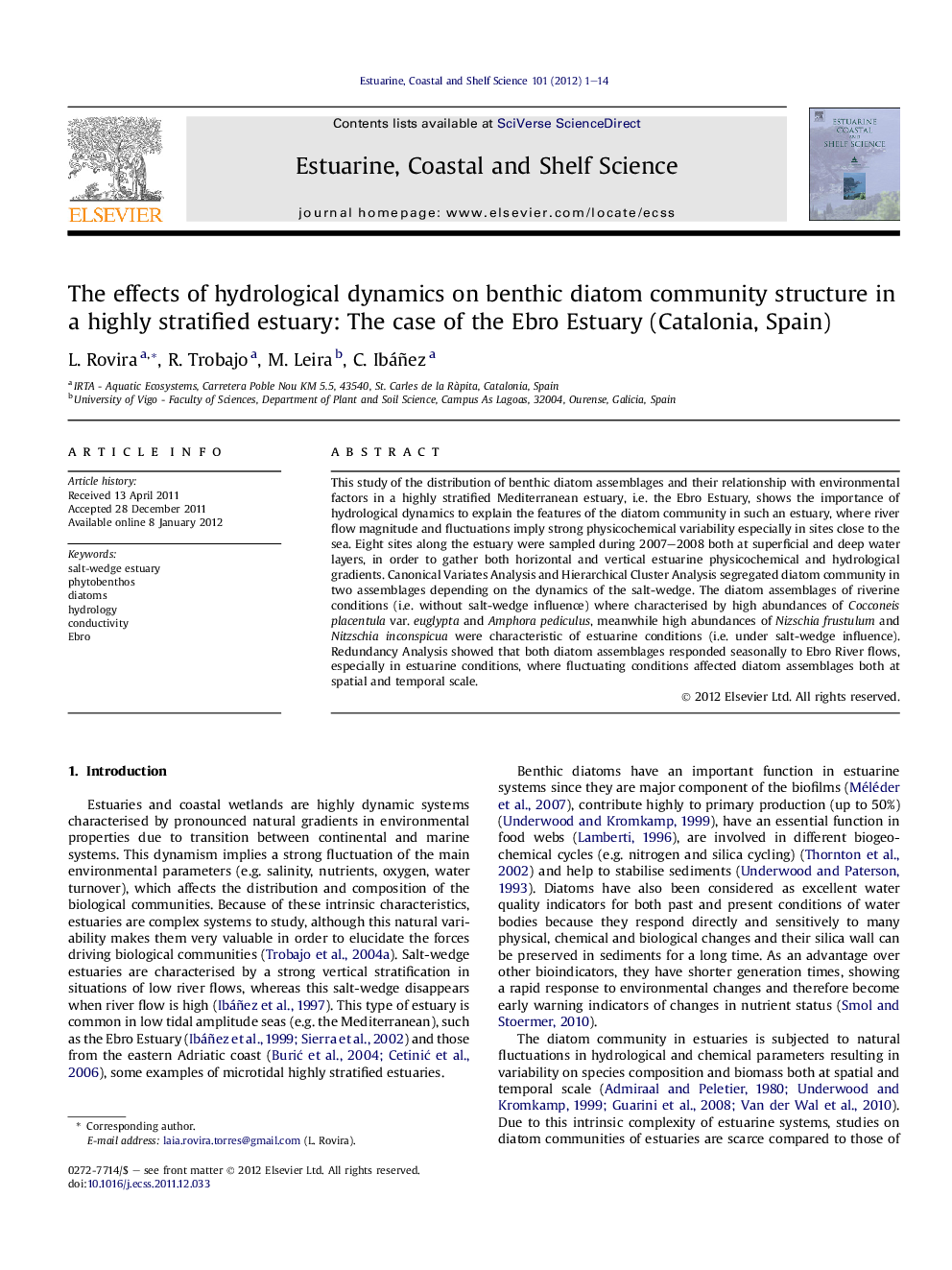| Article ID | Journal | Published Year | Pages | File Type |
|---|---|---|---|---|
| 4540235 | Estuarine, Coastal and Shelf Science | 2012 | 14 Pages |
This study of the distribution of benthic diatom assemblages and their relationship with environmental factors in a highly stratified Mediterranean estuary, i.e. the Ebro Estuary, shows the importance of hydrological dynamics to explain the features of the diatom community in such an estuary, where river flow magnitude and fluctuations imply strong physicochemical variability especially in sites close to the sea. Eight sites along the estuary were sampled during 2007–2008 both at superficial and deep water layers, in order to gather both horizontal and vertical estuarine physicochemical and hydrological gradients. Canonical Variates Analysis and Hierarchical Cluster Analysis segregated diatom community in two assemblages depending on the dynamics of the salt-wedge. The diatom assemblages of riverine conditions (i.e. without salt-wedge influence) where characterised by high abundances of Cocconeis placentula var. euglypta and Amphora pediculus, meanwhile high abundances of Nizschia frustulum and Nitzschia inconspicua were characteristic of estuarine conditions (i.e. under salt-wedge influence). Redundancy Analysis showed that both diatom assemblages responded seasonally to Ebro River flows, especially in estuarine conditions, where fluctuating conditions affected diatom assemblages both at spatial and temporal scale.
